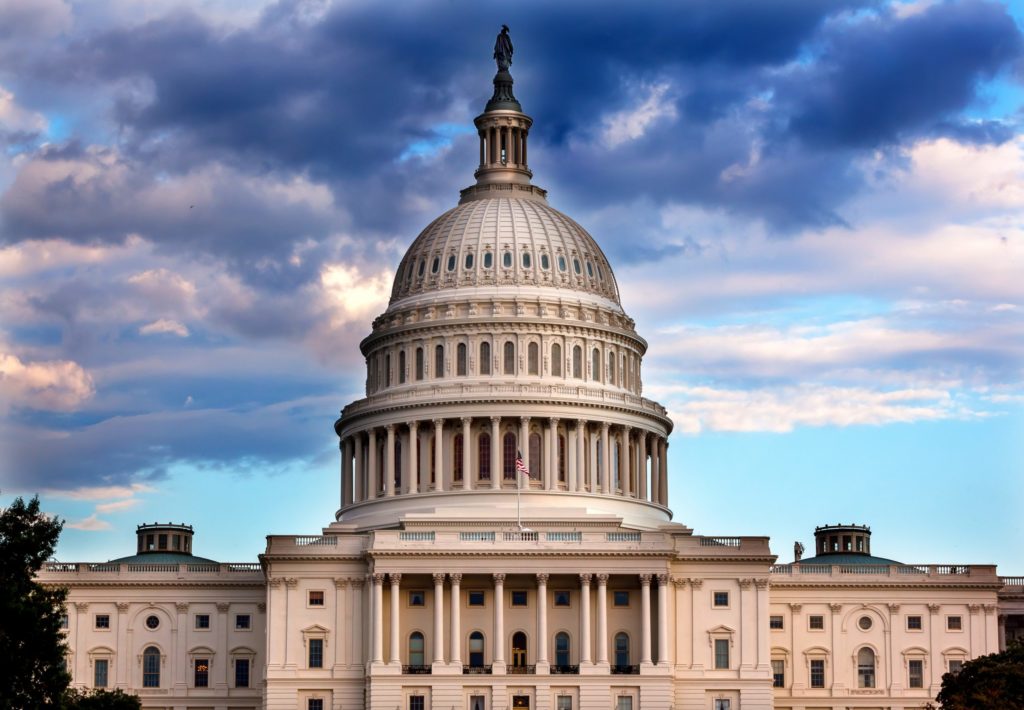BBB Series Summary and Conclusion
This is the conclusion to a series of posts on this topic. Scroll to the end to find the most recent posts.
Summary
This blog series assessed the most significant climate provisions in Build Back Better (BBB). Analyses covered $221 billion of BBB’s climate subsidies—more than half of BBB’s $417 billion climate subsidies, meaning we feel this is a representative assessment of BBB’s effectiveness. We learned it is unlikely that BBB will on its own achieve the emissions targets of the Biden administration. While there are some emission benefits, the subsidies only address select marginal opportunities for decarbonization in the United States, and this is reflected in the Congressional Budget Office’s (CBO) cost estimates, which formed the basis of our analysis.
The table below breaks down the emissions change in 2030 from the policy types, and the total cost of the programs assessed in our series of analyses. Note that this does not include every program, but simply the programs we assessed, which represent about 53 percent of BBB’s total energy and environmental spending.
|
2030 Emissions Reductions (million metric tons) |
Subsidy Expenditures (millions) |
|
|
Clean Electricity Subsidies |
294 |
$173,170 |
|
EV Subsidies |
21 |
$13,954 |
|
Alternative Fuels |
19 |
$34,114 |
|
Total |
333 |
$221,238 |
Sources: CBO estimated budgetary effects of HR 5376 and RSI estimates.
Of the policies assessed, we estimate greenhouse gas emissions in 2030 will be 333 million metric tons lower than they would be without them. The lion’s share of these benefits come from subsidies for clean electricity, which also represent the majority of the cost. We generally assumed that all new clean electricity sources would replace existing coal plants, though it should be noted that this is a highly favorable assumption to the policy, since some of these new power plants will replace either natural gas or even other clean electricity sources (nuclear power, older renewable facilities, etc.).
The policies we did not assess mostly entailed smaller subsidies, or subsidies that aim to be supportive of policies that were assessed (i.e. transmission subsidies for clean electricity, electric vehicle (EV) charging station subsidies, etc.). It is unlikely that these subsidies represent an additional emission abatement equal to or greater than the 333 million metric tons of emission abatement from the subsidies we did assess. However, they can offer insight into the maximum emission abatement potential of BBB. If we assumed that the subsidies not assessed did have the same efficiency as the policies included in our estimates, the additional emission benefit would be 295 million metric tons, for a total emission abatement of 629 million metric tons in 2030. Again, it should be noted that this is likely an overestimation, since the policies most likely to have a significant impact were already included in prior analyses, but it does help us to understand the upper bound limits of BBB’s emission benefits.
Sources: EIA historical emissions data, EIA AEO 2021, RSI estimates.
In short, under the most favorable assumptions BBB could reduce emissions by 629 million metric tons in 2030, or about 10 percent of emissions relative to 2005. The United States is already on track to have a 24 percent reduction of emissions relative to 2005. President Joe Biden’s emission target is 50 percent below 2005 emissions by 2030, leaving a gap of 1,580 million metric tons that his policies are supposed to fill. The policies we assessed in BBB, which we believe represent the most likely components to contribute to that target, would get 21 percent of President Biden’s target. If we generously assume that the policies we expect to be less effective have the same effect relative to their cost as the policies we did assess, then BBB could account for 40 percent of President Biden’s emission targets. Estimates that assume BBB combined with bipartisan infrastructure bills would nearly achieve his emission targets, such as those of Sen. Chuck Schumer’s office, seem to be far off the mark.
The fact is that BBB is an extremely expensive bill with a large amount of climate provisions, many of which rely on policy implementations that the economic literature has shown to be inefficient. It does not reach the level of emission reduction that many of its advocates claim, but since the policies typically subsidize clean energy technologies per unit (subsidies per vehicle, subsidies per kilowatt hour, etc.) then achieving ambitious emission targets via subsidy alone would also mean significantly higher costs than estimated by the CBO. For policy analysts, none of this comes as a surprise since BBB mostly relies on extensions and expansions of existing climate policies, but since much of the discussion surrounding BBB has relied on exceedingly optimistic assumptions this information may be surprising to policymakers.
It also should be noted that the fiscal condition of the nation, where debt is currently over 100 percent of gross domestic product (GDP), makes simply subsidizing all forms of climate mitigation effort an unwise strategy. To achieve the emission targets laid out by the Biden administration, more efficient policies should be pursued, since the policies in BBB—already expensive on their own—would require even more expenditure than estimated by the CBO to reach a 50 percent emission reduction by 2030. Given that the United States already has considerable budgetary shortfalls, there is a fair question as to what the limits of subsidy support the U.S. government could provide.
Alternative Policies
The most concerning issue with BBB is not that it is an expensive bill that fails to meet its claimed objectives, but rather that there are unexplored opportunities to achieve the same or greater climate benefits more cost-effectively. For example, the carbon-pricing MARKET CHOICE Act was estimated to cut 2030 emissions to 3.45 billion metric tons, beating BBB’s impact at a lower cost. Even the MARKET CHOICE Act is inefficient, though, compared to effectively implemented carbon pricing where revenues are used to cut the most economically harmful taxes, which could result in net economic growth. By contrast, BBB is estimated to reduce GDP.
Policy options other than subsidies to stimulate clean energy investment are also unexplored in BBB. For example, past R Street analysis has found that regulations under the National Environmental Policy Act are significantly more likely to impede clean energy growth than fossil fuel production. It makes little sense to increase government expenditures when it is regulatory policy, not capital availability, that is impeding clean energy growth. For example, policies to overcome perverse regulatory incentives in adopting grid-enhancing technologies can save the economy tens of billions and avoid more emissions than BBB’s clean electricity provisions by 2030.
There also should be some cognizance that President Biden’s 50 percent emission target for the United States is fundamentally arbitrary. Greenhouse gases are global pollutants that disperse evenly throughout the atmosphere, meaning it is the global carbon budget that matters, not the emission targets of a single country. It is entirely feasible that more global climate benefit could be achieved and at a lower cost by supporting efforts to supplant pollution abroad. For example, exports of U.S. liquefied natural gas typically replace coal combustion abroad and reduce emissions, or the promotion of global carbon offset markets, which could reduce atmospheric concentrations of greenhouse gases by offsetting between 1 and 4.3 billion metric tons of CO2 equivalent by 2030. There is likely greater climate benefit to be had from identifying efficient opportunities globally than myopically focusing only on U.S. emissions.
Not all of BBB’s subsidies analyzed in this series have equal opportunities for efficiency improvements. Ideally public dollars should be used to address market failures, and in the case of climate policy the best use of government subsidy is on early stage technology that could deliver economic and environmental benefits in the future, but have benefits that are too distant to attract private capital. Mature, widely deployed technologies are already at scale and able to attract private sector capital—and are unlikely to yield further efficiency improvements from public subsidy. BBB’s subsidies for conventional nuclear, wind, solar or EVs may not do much because these technologies are already at or near cost parity with their competitors, whereas subsidies for alternative fuels or other nascent technologies may be more likely to yield a future benefit.
Importantly, though, a major challenge in addressing climate change today is that most of the existing clean energy technologies are imperfect substitutes. Wind and solar power, for example, are only available intermittently, and long-duration energy storage is expensive compared to fossil fuels. Electric vehicles work well, but scaling them to replace combustion engine vehicles globally may require an impossibly large amount of minerals. The technologies that are most likely to catalyze a cost-effective global transition to clean energy are likely only in their infancy or not even yet developed. While it is tempting for policymakers to mandate or force changes to the solutions they can see presently, this optimism bias is detrimental because it could mean forgoing more impactful solutions in the future that are not yet available today.
Ultimately, facilitating a global clean energy transition will depend on being able to demonstrate that clean energy solutions are cost-effective and practical substitutes in a portfolio context. Enhancing competition and consumer choice in energy markets improves the deployment and cost-effectiveness of integrating imperfect substitutes, ranging from intermittent renewables to carbon offsets. Their limitations, however, make innovation policy key for deeper cost-effective decarbonization. Policies like BBB, which aim to shift significant clean energy costs from the private to the public sector will not set convincing examples to developing nations that may not be able to bear the costs of subsidizing electric vehicles or renewable energy.
Conclusion
Our analyses show that BBB is a major legislative proposal, and its large focus on climate would result in some mitigation of U.S. greenhouse gas emissions. However, our analyses suggest that BBB fails to approach the emission targets of President Biden, and many of BBB’s policies are inefficient and unlikely to entail more benefit than cost. This is due in part to the fact that cost is not the only factor behind purchasing decisions that affect clean energy deployment. The structure of BBB subsidies make for inefficient policies, causing climate benefits to come at a high cost. Achieving greater benefits with the proposed subsidy design would entail higher costs to taxpayers, and at the estimated costs of BBB the emission benefits fall well below what some BBB supporters claim.
Image credit: Smileus
INTRODUCTION – Build Back Better: How Much Bang for the Buck?
PART 1 – The Costs and Benefits of Nuclear Power Subsidies
PART 2 – The Inefficiency of Renewable Energy Subsidies
PART 3 – EV Subsidies Likely to Have Minimal Impact
PART 4 – Alternative fuels subsidies are small in size but with interesting potential
CONCLUSION – BBB Series Summary and Conclusion









